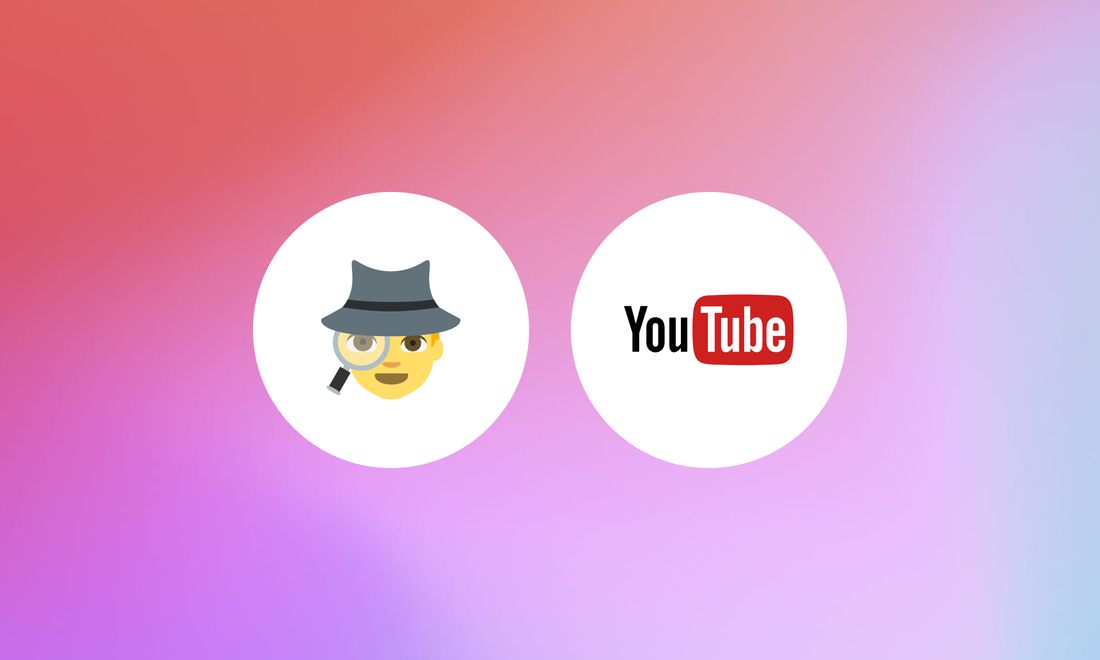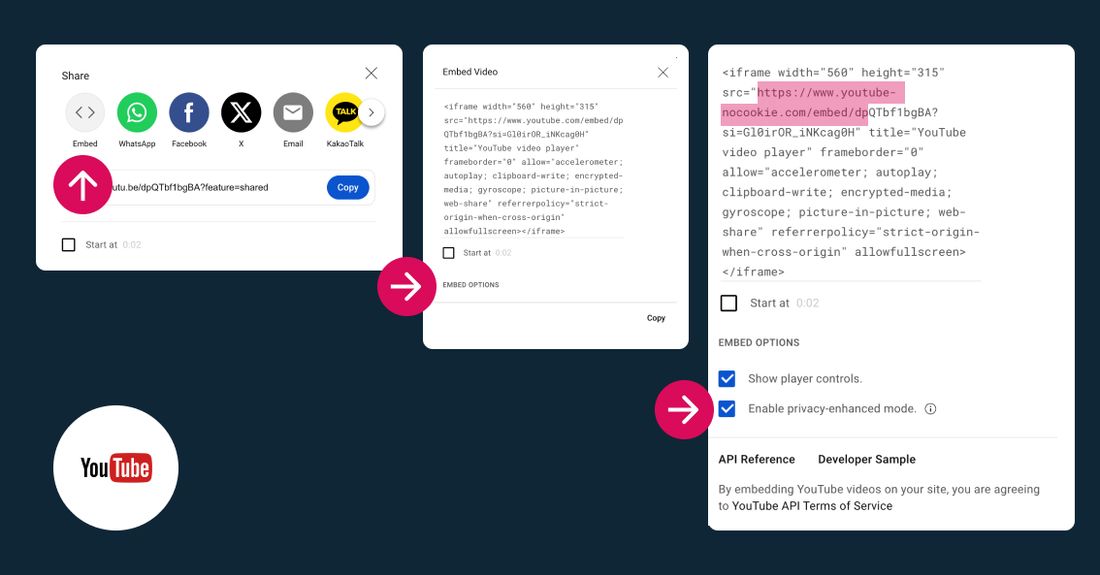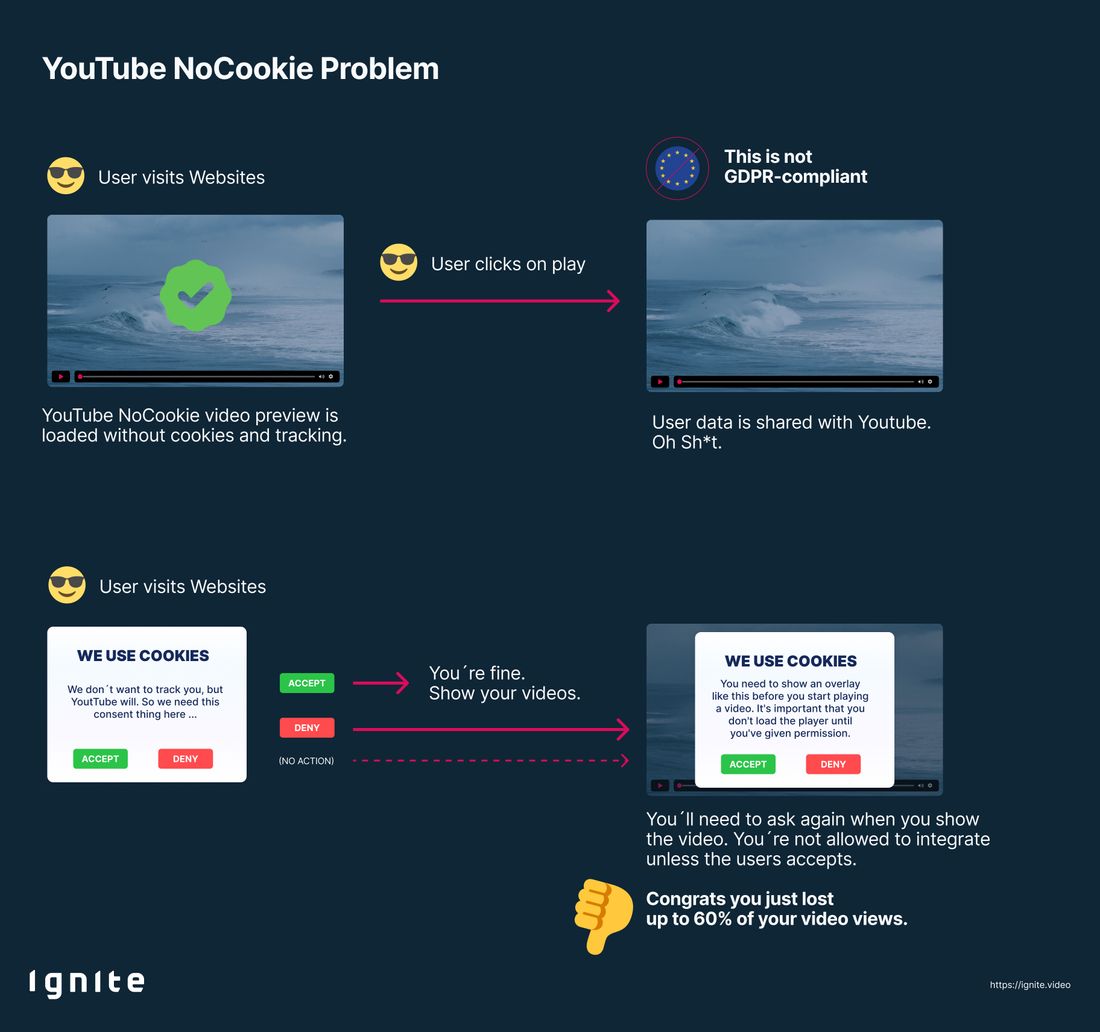YouTube NoCookie:
How It Works
(incl. Setup Guide)
You want to embed a YouTube video on your website — but with as little tracking as possible? Then you’ve probably come across the youtube-nocookie.com / YouTube NoCookie embed option.
It sounds promising: fewer cookies, more privacy, and no need for complex setups. But what does it actually do? And is it enough to stay GDPR-compliant?

In this guide, you’ll learn:
- how the YouTube NoCookie mode works,
- how to activate it correctly,
- and what you should consider when using it.
We’ll also take a look at the limitations of this method — and why it’s not a full privacy solution on its own.
There is one big misconception: yes, less tracking. But if you want to be GDPR-compliant with YouTube you still need consent to show the video, you still need a 2-click-option for every one who didn´t click agree in your cookie banner.
What Is the YouTube NoCookie Mode?
YouTube’s NoCookie option allows you to embed videos via a special domain: youtube-nocookie.com.
The goal: reduce tracking and cookies when someone watches a video on your site.
According to Google, when you use this domain, YouTube won’t store cookies until the video is actually played. In theory, this means no tracking happens automatically when the page loads — only once the user interacts with the player.
It’s a small but important difference compared to standard embeds, where cookies are often set immediately when the page loads — even if the user never clicks "Play".

How to Enable the YouTube NoCookie Embed
You don’t need any programming skills to activate it. It’s a simple change in the embed code:
🎛️ How to enable YT NoCookie
- YouTube makes it fairly easy to activate this privacy-enhanced mode. When you click “Share” → “Embed” on a video, there’s a small checkbox underneath labeled “Enable privacy-enhanced mode.”
- Ticking this box will automatically generate the embed code with the youtube-nocookie.com domain.
- If you missed it or are editing the code manually, you can also change the domain yourself: Standard embed: https://www.youtube.com/embed/ABC12345 NoCookie embed: https://www.youtube-nocookie.com/embed/ABC12345
- Keep all other parameters Don't remove other settings unless needed.
- Test your embed Load the page, inspect the network traffic and cookies, and make sure everything works as expected.

What You Should Also Know: YouTube NoCookie isn't automatically GDPR-compliant
Using youtube-nocookie.com helps — but it doesn’t solve everything.
Here are a few things to keep in mind:
🍪 YouTube still gets relevant user data - Once a user hits "Play", YouTube still get´s user data that is protected under GDPR laws. On it´s own this is not gdpr-compliant.
🔒 Consent is still required under GDPR - Even if cookies aren't set at page load, loading them on interaction still requires user consent in most cases.

“Using YouTube NoCookie only prevents the transfer of personal data to third parties (e.g., ad services). YouTube cookies still collect some user data and transfer it to specific Google servers—even before the embedded video is played. Therefore, simply using YouTube NoCookie on your website is not entirely GDPR-compliant.”
📝 Update your privacy policy - Be transparent: mention that you're embedding YouTube content and explain what happens when users interact with it.
👀 Use a preview or two-click solution - To fully comply with data protection rules, you should block the video by default and only load it after explicit consent (e.g. via a preview image or placeholder with a click-to-activate option).
🎭 Background autoplay videos are close to impossible - If you want to autoplay videos on page load (like in hero sections), youtube is no good option. No with or without cookies. It´s just not build for that.
Conclusion: A Useful Option, But Not GDPR-Compliant by Default
The YouTube NoCookie mode is a helpful step towards reducing automatic tracking — but it's not a full privacy solution.
👉 Our tip:
Use youtube-nocookie.com as part of a responsible embed strategy — ideally combined with a consent banner or two-click solution.
And if you're looking for a fully privacy-first video hosting platform that works without third-party tracking or cookies, it might be time to explore alternatives like Ignite Video — GDPR-compliant, cookie-free, and optimized for performance and UX.
FAQ: YouTube NoCookie & GDPR – What You Really Need to Know
Here are the most common questions we get - with clear answers. And yes it´s sort of the same thing as we write above ...
Is the NoCookie mode enough to be GDPR-compliant?
No. While the NoCookie mode prevents cookies from being set when the page loads, personal data is still transmitted to YouTube (Google) when the video is played. Under GDPR, that requires prior user consent.
Do I still need a cookie banner or a two-click solution with NoCookie?
Yes, absolutely. As soon as any data is sent to Google - typically when someone hits "Play" - you need user consent. This applies even if you use the youtube-nocookie.com domain.
Is the difference between standard and NoCookie embeds legally relevant?
Technically yes, legally no. NoCookie changes the behavior slightly by delaying data transmission, but from a GDPR perspective, it makes no real difference. Consent is still required when playback triggers tracking.
Can I embed YouTube NoCookie videos without asking for consent?
No. Even with NoCookie embeds, you're violating GDPR if you load videos without user consent. The legal risk remains.
What do I need to do to use YouTube NoCookie legally?
- Implement a two-click solution or a reliable consent tool
- Update your privacy policy with detailed information about YouTube embeds
- Ensure no connection to YouTube is made before consent is given
Can I autoplay NoCookie videos?
No. Autoplaying is nearly impossible with NoCookie embeds, because data transmission isn’t allowed until after the user interacts. It’s limited both technically and legally.
Is there a better GDPR-compliant way to show videos?
Yes. If you want to embed videos without consent banners, tracking or restrictions, you’ll need a hosting provider that works without cookies — like Ignite Video.
Video-Hosting in Europe
To empower brands to realize the full potential of their video content, we made video hosting & streaming cookie- and consent-free. GDPR-compliant, hosted in Europe & easy to integrate. Made for Europe.